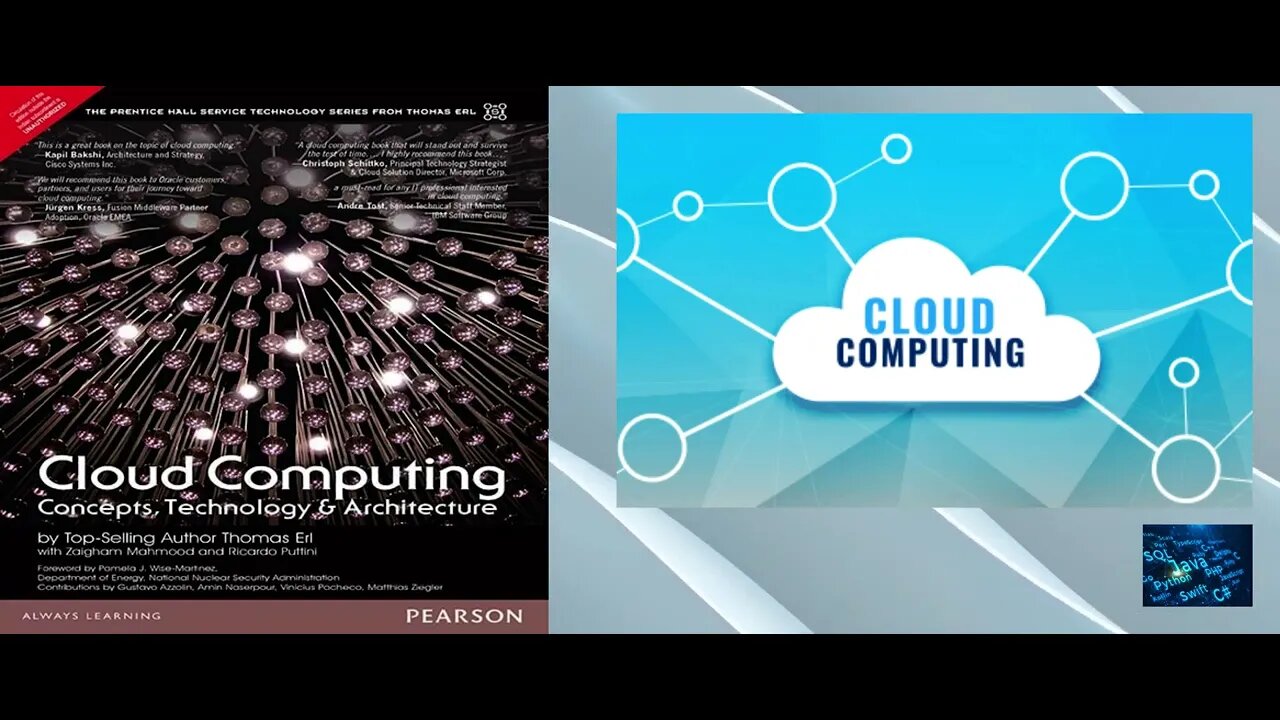Premium Only Content

Cloud Computing: Concepts, Technology & Architecture
You Tube:- https://www.youtube.com/@programmingbookpdf
Linkedin:- https://www.linkedin.com/in/meet-mangukiya-3350a11b6
Website:-https://www.programmingbookspdf.com/
Linktree:- https://linktr.ee/meet.mangukiya2004
Instagram:- https://www.instagram.com/meet.mangukiy/
Telegram:- https://t.me/ProgrammingBookPdf
Clouds are distributed technology platforms that leverage sophisticated technology innovations to provide highly scalable and resilient environments that can be remotely utilized by organizations in a multitude of powerful ways. To successfully build upon, integrate with, or even create a cloud environment requires an understanding of its common inner mechanics, architectural layers, and models, as well as an understanding of the business and economic factors that result from the adoption and real-world use of cloud-based services.
In Cloud Computing: Concepts, Technology & Architecture, Thomas Erl, one of the world’s top-selling IT authors, teams up with cloud computing experts and researchers to break down proven and mature cloud computing technologies and practices into a series of well-defined concepts, models, technology mechanisms, and technology architectures, all from an industry-centric and vendor-neutral point of view. In doing so, the book establishes concrete, academic coverage with a focus on structure, clarity, and well-defined building blocks for mainstream cloud computing platforms and solutions.
Subsequent to technology-centric coverage, the book proceeds to establish business-centric models and metrics that allow for the financial assessment of cloud-based IT resources and their comparison to those hosted on traditional IT enterprise premises. Also provided are templates and formulas for calculating SLA-related quality-of-service values and numerous explorations of the SaaS, PaaS, and IaaS delivery models.
The idea of cloud computing isn’t new, or overly complicated from a technology resources and internetworking perspective. What’s new is the growth and maturity of cloud computing methods, and strategies that enable the goals of business agility. Looking back, the phrase “utility computing” didn’t captivate or create the stir in the information industry as the term “cloud computing” has in recent years. Nevertheless, appreciation of readily available resources has arrived and the utilitarian or servicing features are what are at the heart of outsourcing the access of information technology resources and services. In this light, cloud computing represents a fl exible, cost- effective, and proven delivery platform for business and consumer information services over the Internet. Cloud computing has become an industry game changer as businesses and information technology leaders realize the potential in combining and sharing computing resources as opposed to building and maintaining them. There’s seemingly no shortage of views regarding the benefi ts of cloud computing nor is there a shortage of vendors willing to offer services in either open source or promising commercial solutions. Beyond the hype, there are many aspects of the cloud that have earned new consideration due to their increased service capability and potential effi ciencies. The ability to demonstrate transforming results in cloud computing to resolve traditional business problems using information technology management best practices now exists. In the case of economic impacts, the principle of pay-as-you-go and computer agnostic services are concepts ready for prime time. We can measure performance as well as calculate the economic and environmental effects of cloud computing today.
#tubebuddy
#Keywordtool
#vidiq
#youtubeautosuggest
#googletrends
#KeywordKeg
#keywordseverywhere
-
 LIVE
LIVE
Sarah Westall
3 hours agoMassive Government Overhaul: FBI, CIA, IRS and more to be Gutted w/ Sam Anthony
867 watching -
 LIVE
LIVE
Quite Frankly
5 hours ago"News Round-Up, Celebrity Stories, Friday Extras" ft. J Gulinello 3/7/25
933 watching -
 LIVE
LIVE
LFA TV
23 hours agoGermany Started Two World Wars and Now Wants Nuclear Weapons | TRUMPET DAILY 3.7.25 7PM
362 watching -
 LIVE
LIVE
2 MIKES LIVE
1 hour ago2 MIKES LIVE #189 Open Mike Friday (Sort Of)
142 watching -
 1:48:14
1:48:14
Right Side Broadcasting Network
9 hours agoLIVE REPLAY: President Trump Delivers Remarks at The White House Digital Assets Summit - 3/7/25
115K40 -
 2:07:17
2:07:17
The Quartering
7 hours agoTrump Goes Ballistic On Russia & Ukraine Gets Results, Democrat Cringe, FBI Arrests Military Men
113K61 -
 1:33:20
1:33:20
Sean Unpaved
6 hours agoWhat Could The 2025 NFL Draft & Season Look Like with Special Guest 2x Super Bowl Champ Phil Simms
30K6 -
 22:48
22:48
The Rad Factory
9 hours ago $0.56 earnedIs Temu 125cc Dirt Bike Worth $1000?
13.8K9 -
 1:23:18
1:23:18
Tactical Advisor
3 hours agoThe Vault Room Podcast 010 | Huge Health Change/Daniel Defense PCC
35.7K1 -
 13:02
13:02
China Uncensored
3 hours agoChina is Ready to Strike Japan
16.1K23